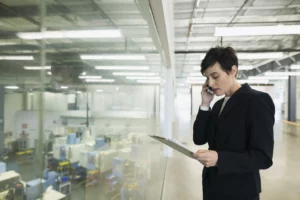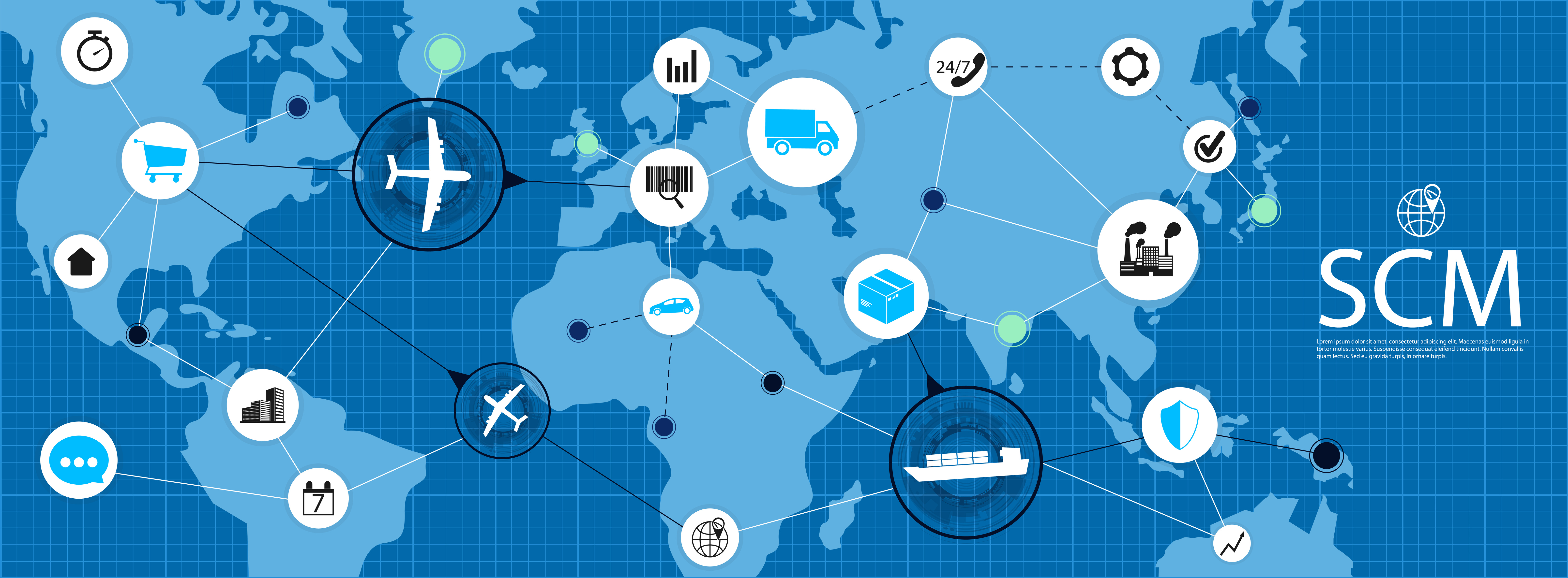Ivalua Named A Leader In The 2025 Gartner Magic Quadrant™ For Source-To-Pay Suites Report
View Report
Ivalua Named A Leader In The 2025 Gartner Magic Quadrant™ For Source-To-Pay Suites Report
View Report
Blog »
di Vishal Patel

In 1996, the Kathy Lee Gifford clothing line was exposed for using Honduran textile suppliers that employed child labor, paid extremely low wages, and provided poor working conditions to produce clothing sold in the United States (nytimes.com, 1996). The brand relied on manufacturing from outsourced and sub-contracted suppliers without fully understanding how they conducted business and failed to consider the risk to the brand and business of being associated to these suppliers . Not only was this ordeal damaging to the Kathy Lee Gifford branded clothing line, Kathy Lee Gifford the person received a great deal of bad publicity and was even called to testify before the United States Congress.
Obviously, not all risks associated with suppliers are preventable, and some incidents occur even with the best laid plans in place and due diligence. When something does go wrong, purchasing organizations with an ingrained focus on risk planning and mitigation have a significantly improved chance of recovering quickly. Without this focus, purchasing organizations are essentially relying on luck to protect the company’s brand and reputation. In this article we’ll review major risks that Procurement organizations for manufacturers will need to consider today and into future, as well as how those risks can be efficiently mitigated and your company’s brand and reputation protected

1.Financial Risks
Most, if not all, manufacturers depend more and more on suppliers to fill the role of a critical innovation partner and provide key solutions that add differentiating value to successful products. However, with this reliance, manufacturers are increasing the amount of risk that must be managed by Procurement. During the last recession in the United States (circa 2007), many manufacturers became painfully aware that even small suppliers can negatively impact the supply chain. Because of this occurrence, many manufacturers increased their focus and monitoring of financial performance of their suppliers with services like D&B and Bureau Van Dijk that provide everything from simple risk scores to comprehensive risk assessments.
How Source 2 Pay (S2P) Technology can help:
Source 2 Pay (S2P) platforms such as Ivalua have integrated supplier information management into the Procurement process. This means that financial scores and analysis from 3rd party suppliers like D&B and others are integrated into a supplier profile, creating a comprehensive overview with risk scores and alerts that can be triggered, notifying purchasing personnel of potential concerns. This capability provides an efficient method to identify risk and take proactive mitigating actions to reduce exposure to that risk.
2.Production Disruptions from Industrial Accidents

In May 2018, fires and explosions tore through the Meridian Magnesium Products plant in Eaton Rapids, Michigan and caused a disruptive ripple effect throughout the automotive supply chain for a number of automotive giants, including: BMW, Chrysler, GMC, Ford and Mercedes Benz (Detroitnews.com, 2018). Due to the disruption, production of Ford’s flagship F-150 truck was halted for approximately two weeks, which is isn’t long considering that repairs to the Meridian Magnesium Products facility were expected to take 4 months to complete. Even with this abbreviated stoppage it could still cost Ford as much as 12 to 14 cents per share (Detroitnews.com, 2018) or $469M to $547M. Thanks to fast action, Ford was able to recover 19 tools from the facility and transfer them to a different Meridian facility and restart production.
How S2P Technology can help:
As can be seen from the Ford and Meridian example, the ability to quickly respond and react to unplanned circumstances is critical to the success of Procurement and their company. S2P platforms that can address the needs of manufacturers include the ability to collaboratively track tooling assets located at supplier plants as well as facilitating the quick evaluation of alternative supply capabilities and options.
3. Product Quality Risk

Samsung launched the Galaxy Note 7 in 10 markets in August 2016, and less than one month later, the company issued a global recall for 2.5 million units of its flagship smartphone due failures in the lithium ion battery that caused some of the devices to catch on fire and explode (Fortune.com, 2016). Samsung identified the issues as being related to manufacturing and product design issues from two different battery suppliers (wsj.com, 2017). It is very likely that Samsung has since made changes to its quality processes to prevent this type of product failure in the future. Those improvements may include FAI, PPAP and APQP, which are quality processes which validate that standards and requirements are understood and are consistently delivered in the product. Implementing these processes can greatly increase the number of successful product launches and reduce the number of quality issues experienced by customers.
How S2P Technology can help:
Best in class quality processes such as FAI, PPAP, APQP, etc., can be included in S2P platforms to improve transparency and collaboration throughout the quality processes and ensure that: products are successfully launched; quality standards are met consistently; documentation and evidence is permanently captured; exceptions are caught and mitigated early; and their reputation and brand is secure.
4. Geopolitical Risk
 In a world and business environment that seems to be more complex every day, manufacturers must navigate geopolitical risks, such as trade wars, political instability, terrorism, and tariffs. The United States imposed a 25% tariff on steel and 10% tariff on aluminum on the EU, Canada and Mexico on June 1, 2018 (NYTimes.com, 2018), and has had a significant impact on all manufacturers that use these materials in the construction of their products. Due to the impact of these tariffs, many manufacturers located in the United States have had to increase their product prices significantly when using US produced steel or aluminum and have lost business to competing businesses that are using alternative supply from low cost countries. To improve competitiveness, companies like Stanley Black & Decker, Inc. and others are considering alternative sources of supply oversees that are less expensive or re-engineering products to include less costly materials that are excluded from the tariff provisions (WSJ.com, 2018).
In a world and business environment that seems to be more complex every day, manufacturers must navigate geopolitical risks, such as trade wars, political instability, terrorism, and tariffs. The United States imposed a 25% tariff on steel and 10% tariff on aluminum on the EU, Canada and Mexico on June 1, 2018 (NYTimes.com, 2018), and has had a significant impact on all manufacturers that use these materials in the construction of their products. Due to the impact of these tariffs, many manufacturers located in the United States have had to increase their product prices significantly when using US produced steel or aluminum and have lost business to competing businesses that are using alternative supply from low cost countries. To improve competitiveness, companies like Stanley Black & Decker, Inc. and others are considering alternative sources of supply oversees that are less expensive or re-engineering products to include less costly materials that are excluded from the tariff provisions (WSJ.com, 2018).
How S2P Technology can help:
Although the prospect of managing geopolitical risk can be daunting, S2P platforms are capable of quickly identifying impacted suppliers with a 360° supplier view including, locations, certifications, capabilities, financial status and various scores as well as the impact on BU’s. Further, those with integrated Bill of Material capabilities can identify components of products that may need to be re-sourced. Where necessary and possible, Procurement can ensure contracted prices, terms and conditions are observed and take action to resource components and proactively author contracts with risk mitigating language.
5. Economic Risk
Economic downturns, foreign exchange rate fluctuations and material cost changes represent just a few examples of economic risk that manufacturers face today. In fact, every manufacturer that deals with international suppliers must determine how to manage risk associated with fluctuations in exchange rates. Many companies try to offset currency risk with hedging, while others try to minimize their involvement with foreign currencies all together by selecting suppliers that quote in a preferred currency and take on the currency fluctuation risk (and include a risk premium in their prices).
How S2P Technology can help:
Foreign exchange rate management requires a cross functional team including personnel from Procurement and finance to work together to develop and execute strategies that protect their company. S2P platforms are well suited to bring cross functional teams together to support the selection of the best currency and supplier selection strategy for the company. Furthermore, these platforms can speed the contracting and/or amendment process to contractually lock in terms with selected suppliers.
6. Environmental
A survey found that 62% of companies impacted by hurricanes in 2017 acknowledged that they weren’t completely prepared to deal with them (MHLNews.com, 2018). The risk of natural disaster impacting business, such as a hurricane, tsunami, tornado, earthquake, floods, wild fires, or other natural disasters can be easy to overlook when evaluating a suppliers’ ability to produce components. This is an especially difficult set of scenarios to plan for because natural disasters are difficult to predict. However, Procurement groups must take all potential risks into consideration when developing the supplier selection strategy for critical components, regardless of how much that component costs. A relatively low-cost material or component that is not readily available from alternative supply is just as effective at shutting down a production line as a high-cost material or component. To manage and mitigate risks proactively, Procurement organizations can use various strategies, like splitting awards between multiple suppliers and working with a select group of suppliers that may not yet be ready to supply critical components, to increase performance, quality and technical competency to increase the number of qualified supplier options.
How S2P Technology can help:
A core strength of S2P platforms for manufacturers to take advantage of is the ability to quickly and easily find information by region, suppliers, components or other attributes and identify potential exposure to a region impacted by a natural disaster and quickly locate and resource alternative supply options.
Conclusion
S2P platforms are not the silver bullet to definitively end all risk, but as described in the examples above for financial, production disruptions from industrial accidents, product quality, geopolitical, economic and environmental risks, they can play a significant role in proactive or reactive risk identification, management and mitigation. These platforms are especially well suited to improving the Procurement team’s ability to plan for and reduce risk exposure and take action fast, by providing a transparent and collaborative space with a 360° view into the situation from Procurement’s perspective with a click of the mouse. A company’s ability to reduce and successfully respond to risk can be the difference between a company that succeeds to protect its brand and reputation and one that fails.

Vishal has spent the last 15 years in various roles within the Procurement and Supply Chain technology market. As an industry analyst, he researched and advised organizations in various industries on best and innovative practices, digitization and optimization. He brings a thorough understanding of market trends and digital technologies that can help enterprises be more effective with their Procurement and Supply Chain strategies. He works to ensure that organizations are empowered with technology platforms that enable flexibility, innovation, and agility.
You can connect with Vishal on Linkedin